Prostatitis is inflammation of the prostate gland.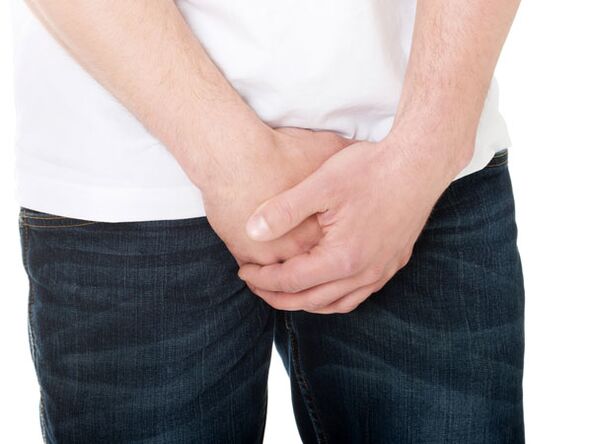 It occurs more frequently in men aged 25-50 years or older.Pain and false urination, as well as the general sense of adversity, are the main symptoms.Often the disease is accompanied by fever and chills.
It occurs more frequently in men aged 25-50 years or older.Pain and false urination, as well as the general sense of adversity, are the main symptoms.Often the disease is accompanied by fever and chills.
Depending on the cause of the incident, the bacterial and avastide of the disease are released.Independent 90% share prostatitis is the most common prostate inflammation.It is estimated that about 50% of all men face this problem, at least once in a lifetime.
The main reasons for the development:
- E. Coli;
- Sexually transmitted infections, including gonorrhea, chlamydia.
- nervous system disorder;
- Reduce body protective functions.
Probably, the risk of developing the disease is increased with chronic metallic indications of the body with alcohol, morphine and nicotine.Studies conducted in the field of modern Andrology argue that there are injuries to the crotch, for example, cyclists and motorcyclists.The conditions mentioned contribute to the deterioration of latent inflammation in the tissues of the organ.
The decisive importance in the development of pathology is attributed to stagnant phenomena in the tissues.In the event of a breach of the capillary blood flow, tissue swelling and secretion, which is filled with the creation of acceptable conditions for the appearance of infectious processes, arise.
The structure and functions of the prostate gland
The protector is the male organ of the genitals, which is under the bladder.The protruding gland of the size of a chestnut weighs 20 grams and surrounds the urethra and two ejaculation channels.They direct the secret of the testicles, accessories and bubbles in the urethra during ejaculation.
The protruding gland produces the so -called secret, which is also part of the liquid seed (ejaculation).It stands out in the urethra when the sperm's effort and supports its transport.About 70% of the ejaculated fluid during orgasm is produced by a prostate.Liquid is an alkaline secretion that also mixes and protects the sperm from the acid vaginal medium, increases their mobility and facilitates their flow in the egg.Due to the anatomical position of the prostate, the disease often causes symptoms such as painful urination.
Prostatitis types
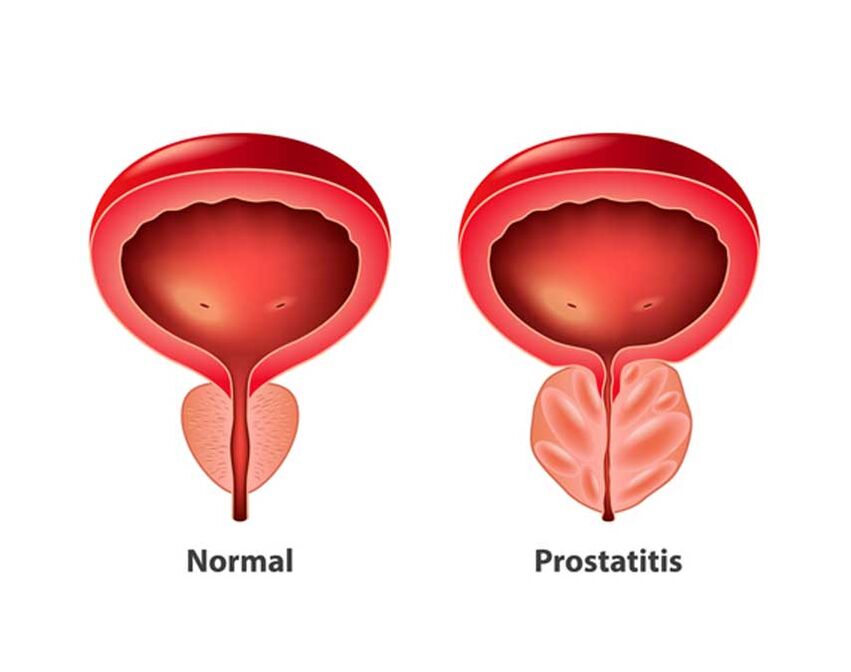
With a bacterial damage to the prostate, two forms of current are distinguished:
- Sharp.Inflammation is caused by bacteria that grow through the urethra and colonize the prostate.These are the Escherichia coli bacteria that live in the intestines.Other pathogens include enterobacteria and mycobacteria.Inflammation caused by bacteria is about 10% of cases.
- Chronic.A non -backed bacterial infection can evolve into chronic.This is when the complaints last more than 3 months.
Chronic prostatitis is mainly diagnosed with the elderly.In the absence of timely treatment, infertility develops in about 40% of cases.This is due to the fact that the body no longer develops adequate secret, which provides sperm mobility.
Table - types and symptoms of prostatitis in men
| Name | Peculiarities | Symptoms |
| Axis | The basis of the evacuation is based.Urina enters the conductors, as a result of which metabolic products (uric acid bases, purine and pyimidine) are deposited on its tissue, which leads to inflammation and formation of stones. |
|
| Catarrhal | Inflammation is found in separate fractions of the gland, which leads to a change in the structure of the submucosal layer and the mucosa of the introductory conductors.In the phenomena, stagnant phenomena occur, which are full of further progression of the disease. |
|
| Leafy | It is accompanied by moderate hyperthermia or typical derogatory.There is a focal supremacy of all damaged areas. |
|
| Parenchymatous | There are multiple damage.Most of the parenchyma, the median tissue is involved in the pathological process.By accumulating multiple abscesses, an abscess is formed. |
|
Inflammation can also occur without symptoms.It is located in the context of a preventive examination in the content of an increased number of leukocytes in the sperm.
Characteristics of the current
Prostatitis has several stages of development, each of which is characterized by certain symptoms:
- Stage I. is characterized by the appearance of the inflammatory process and enhanced prostate function.The general condition remains normal, with the exception of the appearance of the clinical picture of the disease.The first stage lasts for 1-3 years.At this stage, a complete treatment is possible with the help of drugs.
- Stage II. Symptoms recede.After some time, there is a breach of erection and irritability.In sexual intercourse, there may be no ejaculation.There is weakness and pain in the perineum.It is accompanied by a violation of the organ structure, which is filled with weakened blood supply.Treatment is performed using antibiotics, immunomodulators and physiotherapy.
- Stage III. The last stage of the development of the disease, which is accompanied by tissue necrosis.There are scars on it, which begins to push the internal organs.The iron is crumpled and distorted, which is full of genital dysfunctions.There is acute pain during urination and the signs of radicals are enhanced.The patient should be under constant medical examination.
In advanced cases, the disease is completely removed.Therefore, do not start diseases.It is best to consult a doctor when the first symptoms appear, which can be adapted to medicines.
Prostatitis symptoms
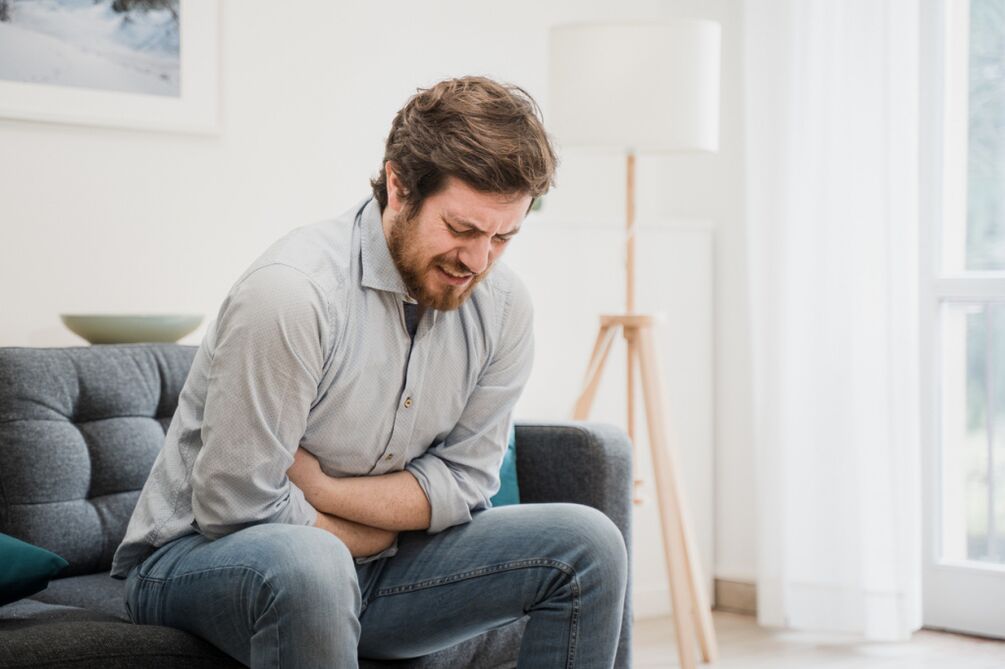
The manifestations are the same for all types of diseases, with the exception of fever, which exists only with bacterial origin.The signs of prostatitis are conditional divided into 2 groups:
- From the URIC vegetable device - painful and frequent urination, lower abdomen pain, incomplete discharge.
- On the part of sexual function - loss of orgasm, premature ejaculation, weak erection, rectum pain.
There is also increased nervousness and anxiety caused by attention concentration in its condition.This may be accompanied by a change in character, grudge and irritability.
Possible complications
The absence of early diagnosis and treatment leads to the following complications:
- Urine delay.The patient is not able to empty the bladder independently, which is accompanied by severe pain.There are cases of gap.In order to avoid complications, urine is excreted through a catheter.
- Abscess.The pus accumulates, which is accompanied by high body temperature, chills and severe pain in the perineum.High dose antibiotics and surgery are required.
- Blood infection (urinary tract).Bacteria penetrate the bloodstream and spread throughout the body.
If the disease progresses for years and without sufficient correction of drugs, a human can become heartless.Only effective treatment helps get rid of such complications.
Diagnosis
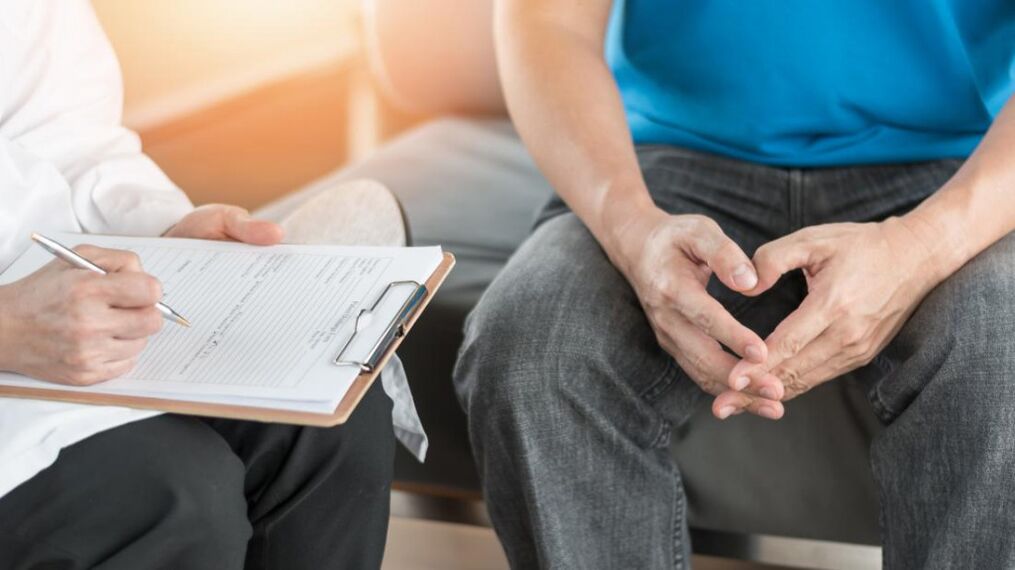
If the first signs and symptoms of prostatitis occur, you should consult a doctor who will diagnose and prescribe an appropriate treatment system.
The main stages of diagnosis:
- History of the analogous (studies of symptoms).
- palpation of groin lymph nodes.
- Urethra coating;
- Ultrasound ultrasound.
- Laboratory blood test;
- Samples samples of sperm and urine to determine the possible type of pathogenic microorganisms.
Based on the results obtained, the treatment is prescribed.In advanced cases, surgical intervention cannot do without.Among the main indications for surgery, an abscess, tradition and acute delay in the urine must be distinguished.
Treatment of prostatitis
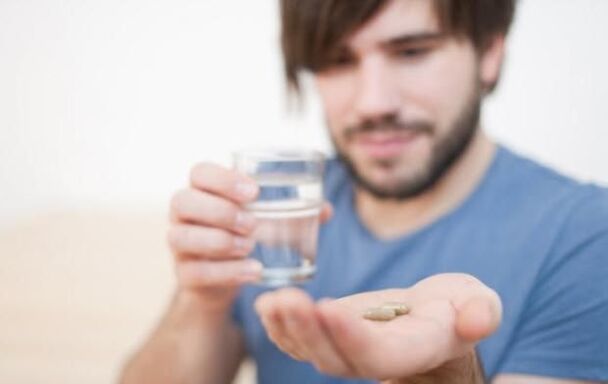
The conservative treatment system is prescribed only after the pathogen is determined.Self -medium in this case is unacceptable because it can lead to irreversible health consequences.
The most effective medicines for prostatitis:
- No. 1 - Phoenix fruit extract.
Plant is specified for prostate damage.Designed based on Freedom Fruits extract.It does not cause hormonal imbalance and does not affect the hypothalamic system-information system.
- No.
The anti -inflammatory, immuno -systricizing drug regulates the functional metabolic activity of the cellular structures of adaptive and congenital immunity.The suppositories are prescribed in complex treatment for adults and children aged 12 years and over.It effectively treats the manifestations of the inflammatory process, reducing the symptoms of the disease.
- No. 3 - Protector.
The drug is widely used in urological diseases.This is the most effective treatment for chronic prostatitis.It reduces the size of the prostate gland moderately, improving urine processes.Available in the form of tablets and suppositories.
- No. 4 - Passage Prostate The form of suppositories and intramuscular injections.
Designed to stop the signs of prostatitis and the treatment of disease in men.The drug of animal origin relieves the swelling of the gland, restores secretory functions, stimulating muscle tone.
- No. 5 - Nitrofurantin.
Antibacterial tablets have an antimicrobial effect.It quickly eliminates inflammation, eliminating gene infections.
- No. 6 - Tsiprofloxacin.
It belongs to the group of fluoride.It effectively treats the complex and simple forms of the disease.Helps eliminate existing violations.
- No. 7 - Azoximer's bromide.
Azoximero -based immunodeficiency factor.It relieves inflammation and has antioxidant and detoxification.Increases body resistance to various types of infections.Available in the form of a solution for injection.
- No. 8 -cephym.
It has a wide range of action, inhibiting the pathogen's cell membrane.Contains character.It is used in complex treatment.
- No. 9- Josamycin.
An antibiotic macrolin based on the propionate Josamycin.It has a bacteriostatic effect by inhibiting the synthesis of protein bacteria.It is produced in the form of granules for the preparation of suspension and tablets.
- No 10- Doxycycline.
The antibiotic of the macrolides group is high in relation to intracellular microorganisms.It is provided for mixed genital infections and urinary tract.
To increase the effectiveness of the drugs, a gland massage is indicated.The process has a complete action - pushes the accumulated secret to the conductors to remove from the body.
Prevention of prostatitis

To rule out the development of the disease, it is recommended to avoid hypothermia, observe a diet and conduct regular sex life.It is also important to exclude sexually transmitted diseases.
A favorable prediction depends on various factors:
- timely diagnosis;
- factor of activation;
- form of the disease;
- age;
- The general condition of the patient.
With timely detection and adequate treatment, prognosis is always positive.Otherwise, consequences such as chronic inflammation and other complications may occur.You should visit the urologist at least once a year.Reconstruction of prostatitis, preventive visits to the doctor are recommended every 6 months.

























